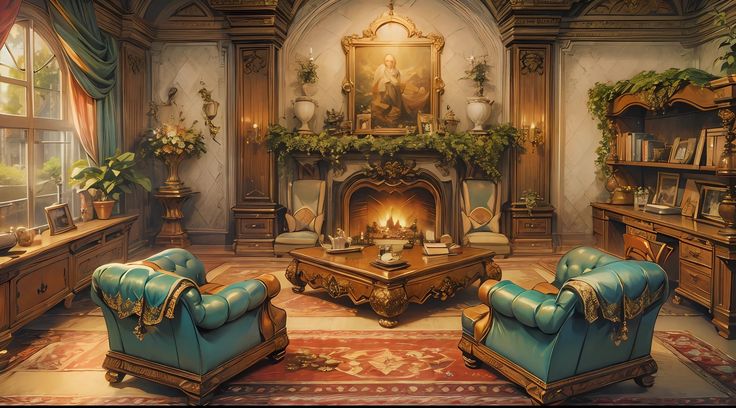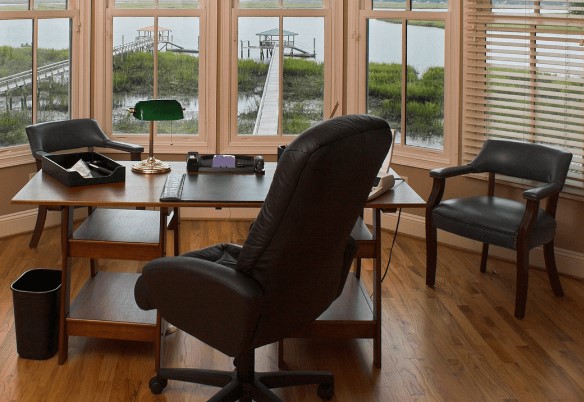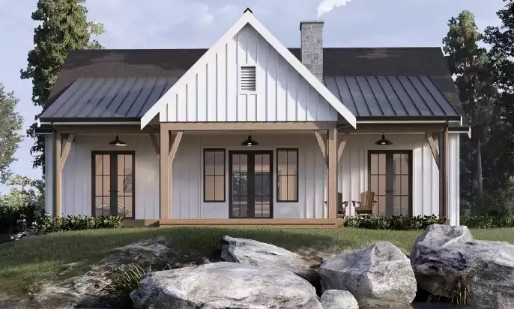Creating a Modern Home: Essential Design Tips for Beginners
Creating a Modern Home: Essential Design Tips for Beginners – Designing a modern home can feel overwhelming, especially for beginners. From selecting the right color palette to choosing sleek furniture, each decision shapes your home’s aesthetic and functionality. This guide will provide essential tips to help you create a modern home that balances style, comfort, and practicality.

1. Understand Modern Design Principles
Before diving into decor and furniture, it’s essential to grasp the fundamentals of modern design. Rooted in minimalism, modern design emphasizes clean lines, open spaces, and functionality. Key features include:
- Neutral Color Palettes: Whites, grays, and earthy tones dominate modern interiors.
- Open Floor Plans: Removing unnecessary walls fosters a sense of space and light.
- Natural Light: Large windows and glass doors help integrate outdoor and indoor spaces.
Start by studying modern design examples to inspire your vision.
2. Declutter and Simplify
One hallmark of modern homes is a lack of clutter. Begin by assessing each room and removing unnecessary items. Consider the following:
- Donate or Store Unused Items: If it doesn’t serve a purpose or bring joy, let it go.
- Incorporate Smart Storage: Furniture with built-in storage, like ottomans or bed frames with drawers, keeps things tidy.
By decluttering, you create a canvas for the minimalist aesthetic of modern design.
3. Choose a Neutral Color Scheme
Modern homes often rely on neutral color palettes that provide a calm, sophisticated backdrop. Here’s how to use colors effectively:
- Primary Colors: Whites, grays, and beiges for walls and larger furniture.
- Accent Colors: Use bold colors like navy, mustard, or black sparingly in decor items such as throw pillows or art pieces.
- Textures: Add depth by mixing materials like leather, linen, or metal.
Neutral tones make your space look timeless and elegant.
4. Emphasize Open Spaces
Modern homes prioritize open, airy environments. If your home doesn’t already have an open floor plan, consider these strategies:
- Furniture Placement: Arrange furniture to create pathways and avoid overcrowding.
- Mirrors: Place large mirrors strategically to reflect light and create an illusion of space.
- Minimal Walls: Use partitions or shelves instead of walls to separate areas without compromising openness.
Open spaces make your home feel welcoming and expansive.

5. Invest in Quality Lighting
Lighting is a vital aspect of modern design, as it enhances the ambiance and functionality of your home. Use these tips:
- Layered Lighting: Combine ambient, task, and accent lighting for flexibility.
- Statement Fixtures: Choose bold, contemporary chandeliers or pendant lights to serve as focal points.
- Smart Lighting: Install smart bulbs or systems that let you adjust brightness and color.
Opt for fixtures with sleek designs to complement the modern aesthetic.
6. Select Modern Furniture
Furniture is one of the most significant investments in your home design. Stick to these guidelines:
- Clean Lines: Look for sofas, chairs, and tables with geometric shapes and minimal ornamentation.
- Functional Pieces: Multi-functional furniture, like sofa beds or extendable tables, combines style with practicality.
- Quality Over Quantity: Invest in fewer but high-quality pieces that will stand the test of time.
Neutral-colored furniture in contemporary designs anchors your modern home.
7. Incorporate Natural Materials
Blending natural materials into your modern home design adds warmth and texture. Some popular choices include:
- Wood: Use it for flooring, furniture, or decor elements.
- Stone: Marble countertops or stone tiles bring elegance to kitchens and bathrooms.
- Plants: Add greenery with potted plants or vertical gardens for a fresh look.
Natural materials create a harmonious balance between minimalism and comfort.
8. Focus on Functional Layouts
Functionality is at the heart of modern design. Here’s how to plan your layout effectively:
- Flow: Ensure that furniture placement allows for easy movement throughout the space.
- Purpose: Design each room with a clear purpose in mind, from workspaces to relaxation zones.
- Multifunctional Areas: Combine spaces, such as integrating a dining area with the kitchen, for efficient use of space.
Prioritizing functionality makes your home practical and inviting.
9. Add Personal Touches
While modern homes are often minimalist, they should still reflect your personality. Customize your space with:
- Art: Hang abstract or modern art pieces that align with your color scheme.
- Books: Display coffee table books that reflect your interests.
- Photos: Use sleek frames for family pictures or memorable moments.
Personal touches make your home uniquely yours without compromising the modern aesthetic.

10. Maximize Technology Integration
Modern homes often incorporate smart technology to enhance convenience and energy efficiency. Here’s what to consider:
- Smart Home Systems: Install systems like Google Home or Amazon Alexa for voice-controlled automation.
- Energy Efficiency: Use smart thermostats, energy-saving bulbs, and solar panels.
- Home Security: Opt for modern security systems with smart locks and cameras.
Tech integration not only modernizes your home but also increases its value.
11. Experiment with Minimal Decor
Minimalist decor aligns perfectly with modern design principles. A few ideas include:
- Wall Art: Select one or two statement pieces per room.
- Area Rugs: Use simple, textured rugs to define spaces.
- Decorative Objects: Choose a few eye-catching vases, sculptures, or bowls.
Less is more when it comes to modern decor.
12. Embrace Sustainability
Sustainable practices in design align with modern values. Incorporate eco-friendly elements such as:
- Reclaimed Wood: Use it for furniture or accent walls.
- LED Lighting: It’s energy-efficient and long-lasting.
- Upcycled Materials: Repurpose items to reduce waste.
Sustainability not only benefits the planet but also adds character to your home.
13. Create Cozy Corners
While modern homes are sleek, they should still feel comfortable. Add cozy corners with:
- Soft Textures: Incorporate plush throw blankets, cushions, or a cozy reading nook.
- Ambient Lighting: Use warm, adjustable lighting to create a relaxing ambiance.
- Accent Chairs: Include a statement chair for comfort and style.
A cozy corner makes your home a retreat from the outside world.
14. Plan for Longevity
Designing a modern home isn’t just about following trends—it’s about creating a timeless space. Tips for longevity include:
- Avoid Trendy Colors: Stick to classic tones for walls and furniture.
- Durable Materials: Invest in furniture and decor that can withstand daily use.
- Future-Proof Technology: Choose scalable and upgradable smart systems.
A thoughtful approach ensures your home remains stylish for years to come.
Final Thoughts
Creating a modern home is about blending simplicity, functionality, and personal style. By focusing on open spaces, clean lines, and timeless elements, you can design a space that feels both contemporary and welcoming. Don’t rush the process—take the time to find pieces and layouts that work for you. With these tips, even beginners can craft a stunning modern home that stands the test of time.





